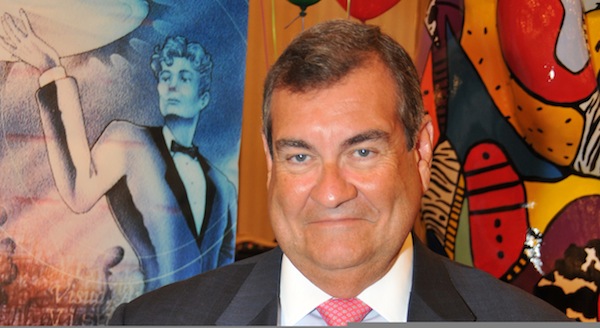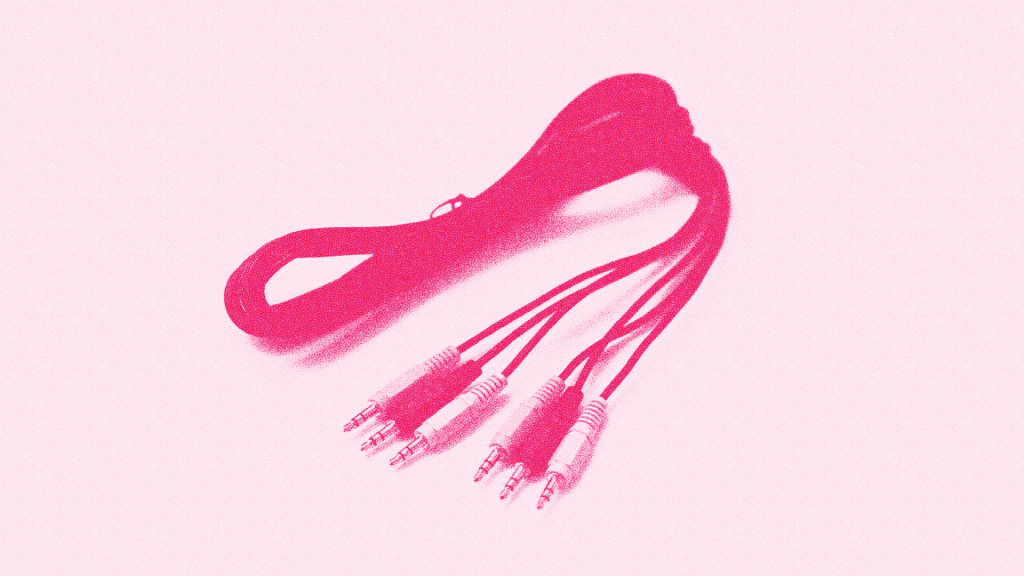
Arts Biz dialog: Adolfo Henriques, chairman & CEO of Gibraltar Private Bank & Trust
By Laura Bruney and Etain Connor, Arts and Business Council of Miami
Sitting on the 8th floor of the Gibraltar Bank offices, we are first struck by the incredible views of downtown Coral Gables. We are here to meet Adolfo Henriques a paragon in our cultural community and an enthusiastic supporter of the arts both personally and professionally. As Chairman and Chief Executive Officer of Gibraltar Private Bank & Trust, Mr. Henriques has embraced the value and economic impact of the cultural community. His civic contributions are extensive including serving as Chairman of the Miami-Dade County Cultural Affairs Council since 2008. Under his leadership on the Council, he has helped keep local arts funding intact during the great recession and helped the Council continue to provide resources to strengthen the 1,000+ arts groups in Miami-Dade. He has also served in senior leadership positions at some of South Florida’s most prestigious institutions including Miami-Dade’s Beacon Council, the Greater Miami Convention and Visitors Bureau, and United Way of Miami-Dade County.
ABC: What do you think makes a vibrant community and what role do the arts play?
AH: I believe people make a vibrant community. But what attracts and retains people? The opportunities and resources a community offers to improve quality of life are essential to attracting and retaining key talent in Miami. And the arts are a key element to improving the quality of our lives.
I like to think of a city in the same way that a film maker creates a scene. You begin with actors performing in front of a green screen. All you can see are the characters moving amongst a blank background, it isn’t until the editor adds color, visual effects, music and more that a truly cinematic moment is created. The arts are like the special effects. They make the impossible happen, make a moment memorable and make people happy. The arts connect us and gives us cause to explore our own creativity. They provide context.That is why the artsis an essential part of our local community. It is the unifying element and proactive catalyst to the nation’s most diverse and fastest growing cultural city in the U.S.
ABC: Why are partnerships between the arts and business important?
AH: Everyone has unique talents, experiences and resources that they bring to a business and every non-profit needs access to varying skills and resources. Through partnerships with arts organziations, businesses can leverage their employees assets, experiences and skills to develop an environment of creativity and improved morale. Additionally by partnering with organizations, a business exposes its employees to new experiences and helps improve their quality of life.It’s a two way street, a win-win scenario for the business and for the organizations.
ABC: How can business get involved with the arts?
AH: Corporate support is not all about money. It’s about developing relationships and being creative. I would encourage groups to spend some time and outreach to connect with Human Resources and Marketing executives. Find out if companies have employee or corporate events. Educate them about using your arts venue or your artists for events and programs. The organization earns income but also gains access to employees and clients. In addition, many corporate sponsorships come from marketing dollars. By developing a relationship with the marketing professionals, you increase your visibility and learn their company’s goals. A long-term relationship with a company creates a stronger connection when it comes time to discuss sponsorship dollars.
ABC: What do you value in partnerships? What benefits are relevant?
AH: Sponsorships are relevant because they allow businesses the opportunity to reach new clients or to enhance relationships with current customers and provide opportunities to develop new relationships. It is important for an arts to organization to work with a business to create opportunities for marketing and business growth. Just having a logo on an invitation or name on a table is of limited value. Businesses like to leverage their donation to go further, like a matching opportunity through programs like Power 2 Give. Creating measureable and meaningful opportunities for business growth and customer development are the path to success when it comes to working together.
ABC: Tell us about one of your best partnerships in the arts.
AH: One of the wonderful privileges of working with the Cultural Affairs Council is the chance to interact with hundreds of artists, art executives, board members and individuals whose passion for the arts is inspiring. Their commitment is contagious, I wish I could personally support them all.
Throughout my career, I have had the opportunity to be part of some amazing arts partnerships. While with Bank of America, I visited the Miami Children’s Museum before they had built the new museum. I was inspired by the excitement of the children doing hands on activities. The museum was in the first stages of building their beautiful and unique space on Watson Island and not only did I become the co-Chair of the Capital Campaign, the bank partnered with them to create a permanent banking exhibit. We set up a child sized bank branch at the museum where the kids can pretend to be employees and can learn about what a bank does. The exhibit provided branding with the bank’s logo, it taught children about a banking experience and provides a subtle connection with the adults that were visiting with the children. It’s one of those great partnerships that has great marketing appeal and fills a powerful need for the organization.
At Gibraltar we empower our people to get involved with groups that they care about. The bank provides some matching funds for our employees and opportunities for them to share their skills. Our executives and associates are supported by the bank in nonprofits ranging from education to health care to arts and culture. Young professionals don’t get involved like they used to. There is a shift from internal communication to crowdsourcing, a shift away from person to person engagement. We are looking into tools to connect with our young professionals to get them involved in the community. As a company, we support dozens of groups including Florida Grand Opera and History Miami, as well as many others. This does not include organizations in which our employees are active, the community commitment grows exponentially.
ABC: Why do you think it’s important for corporations to support the arts?
AH: It starts from a selfish perspective that we all want to live in the best place we possibly can. The arts provide a key element for the quality of life we enjoy but they require corporate support. If you think about it, the arts are everywhere – in our neighborhoods, our parks, small theatres and large institutions. They are attended by children, families, students, seniors, and young professionals. When I started my career, the companies I worked for encouraged their associates to get involved in community groups not just because it generated business but also because it was the right thing to do. The arts are not funded solely on ticket revenue, government funding plays a role, corporate funding plays and role and most importantly individual donors play a role. Miami is not a community filled with big corporations but we do have a lot of wealthy entrepreneurs and individuals who understand the need for support. It is up to arts organizations to do a better job of reaching them. Especially for the mid-sized and smaller organizations.
ABC: How do you engage both business and employees?
AH: Employees are a companies greatest asset. By encouraging associates to share their skills with a group and to serve on non-profit boards they develop leadership skills and gain professional development.
How can arts groups do this? There are many ways. Rather than just asking for a financial donation ask instead for the company to sponsor one of your performances where they can invite clients and employees to attend. Or buy 50 tickets to a performance and promote them to employees. Ask a company to coordinate a team of volunteers. Ask large companies to feature a performance or some artists during lunch in their lunch room or lobby. Now I realize that a lunch room is not the optimum venue to showcase a performance but it brings the product to the people and provides the opportunity to connect.
ABC: Why is today the best time to invest in Miami’s arts community?
AH: If we go back 20 years and you told me that Miami would be home to one of the most iconic art museums, a world-class science museum, a performing arts center in the heart of downtown and arts facilities from Aventura to Homestead I would have thought you were crazy. The arts are everywhere in Miami-Dade and because the organizations are throughout our community, they are accessible to everyone, at all price points. The progress has been astounding and are the result of the dedication of passionate supporters and dreamers. It’s also a tribute to the business leaders and corporate community that were visionary change agents. Their dreams are what makes us one of the most talked about arts communities in the world. It feels like everything is possible now. But while the cultural community may have the infrastructure in place, it is up to usto insure their growth and survival.
We have laid the groundwork now is the time to grow the value by getting your company involved. It’s smart business to invest in the success of the arts in our community.
Recent Content
-
Artsarticle ·
-
Artsarticle ·
-
Artsarticle ·

